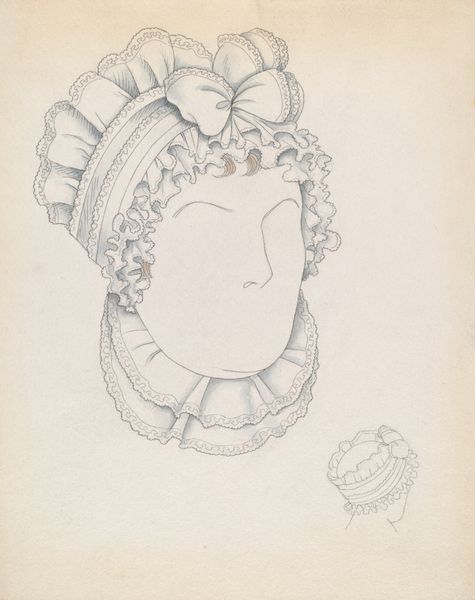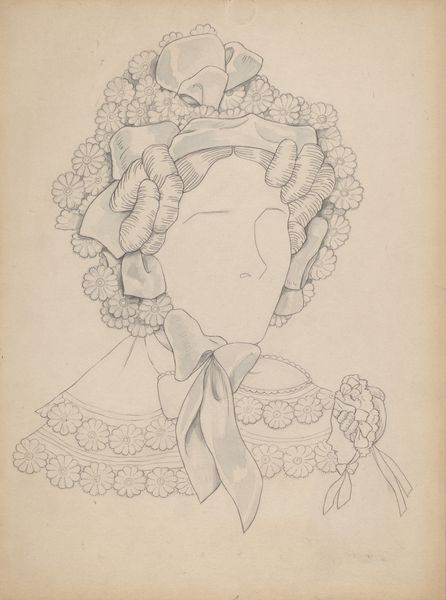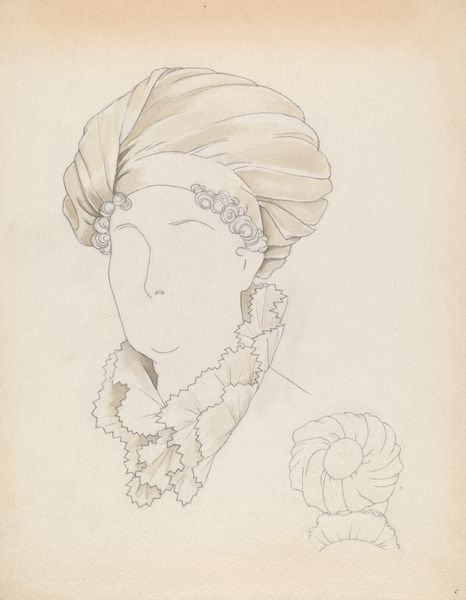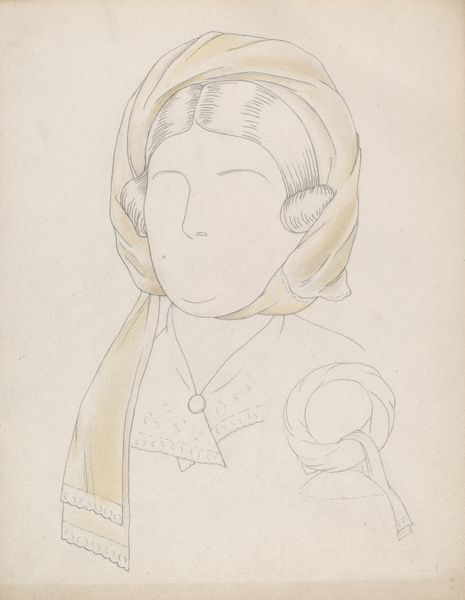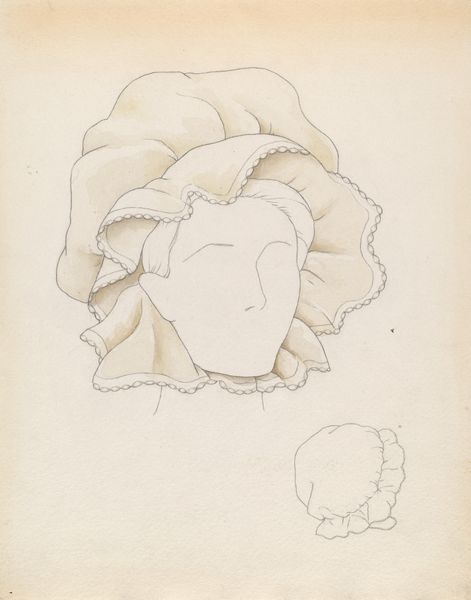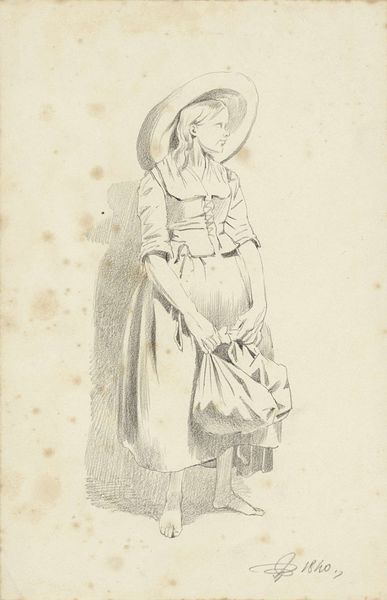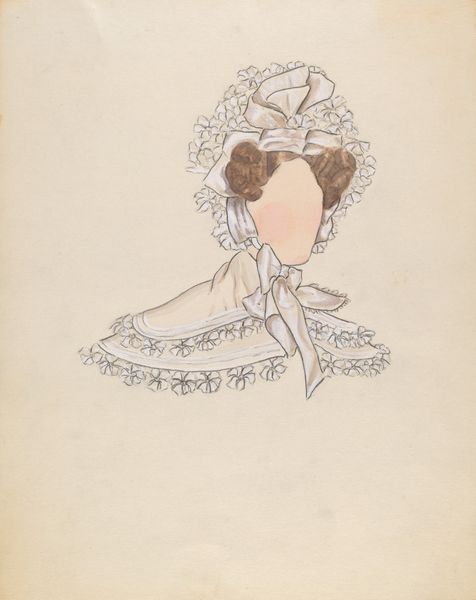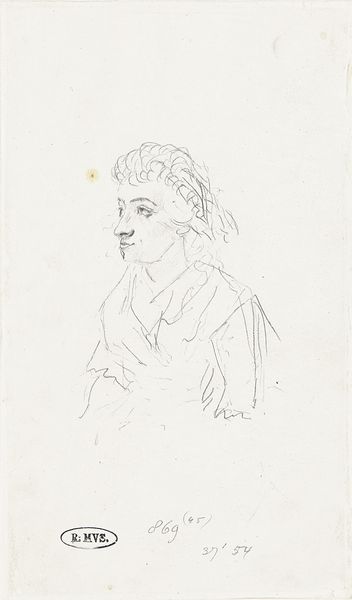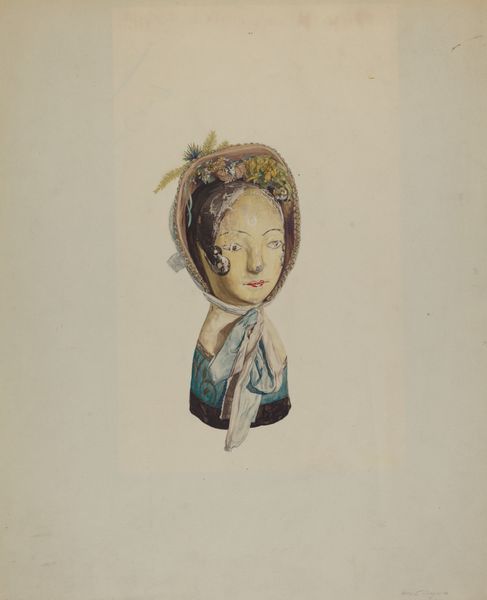
drawing
#
portrait
#
drawing
#
pencil sketch
#
academic-art
Dimensions: overall: 28.6 x 22.8 cm (11 1/4 x 9 in.)
Copyright: National Gallery of Art: CC0 1.0
Curator: Here we have "Headdress," a drawing made around 1937. What are your first thoughts? Editor: The first thing that strikes me is its incompleteness; the blank face within the detailed bonnet gives it an ethereal, almost ghostly quality. Curator: That’s interesting, I read it more as a comment on identity and erasure, especially considering the period. The elaborate head covering situates a person firmly within a specific social role, defining and also confining them. What's left out of the portrait speaks volumes about those expectations, and the history that made them so compelling for women. Editor: I see what you're saying. The material itself - pencil on paper – also speaks to a certain level of accessibility, though. Was this possibly a preliminary sketch, maybe for a mass-produced pattern or guide? It appears it might be the sort of design made for distribution that ordinary folks would sew in their home. The little extra bonnet sketch suggests stages in pattern-making. Curator: Potentially. There is certainly a functionality communicated through the design elements and even its simplicity. Perhaps the drawing represents the accessibility you suggest, not just to create, but to be remade. The work almost begs the viewer to fill the face in according to their personal historical relationship to those constraints. In other words, maybe its very simplicity makes the question it asks more profound. Editor: That's quite insightful! Thinking about the construction... someone had to render each tiny ruffle, manage the angles on that bow, understand fabric drape… So much manual labor implicit within that image of a ‘domestic craft.’ It hints at a lot that the ladies who did it are mostly erased from the dominant narratives. Curator: Exactly! Even with such limitations placed upon women in both high art and domestic spaces, artistic expression and rebellion are made clear in this single drawing! Editor: Well, thanks to it now, and this chat. It’s made me appreciate how much material culture transmits unwritten histories, though it's not complete. Curator: Agreed, viewing it from both our perspectives, a small portrait drawing provides an entry point to discuss important feminist history!
Comments
No comments
Be the first to comment and join the conversation on the ultimate creative platform.
